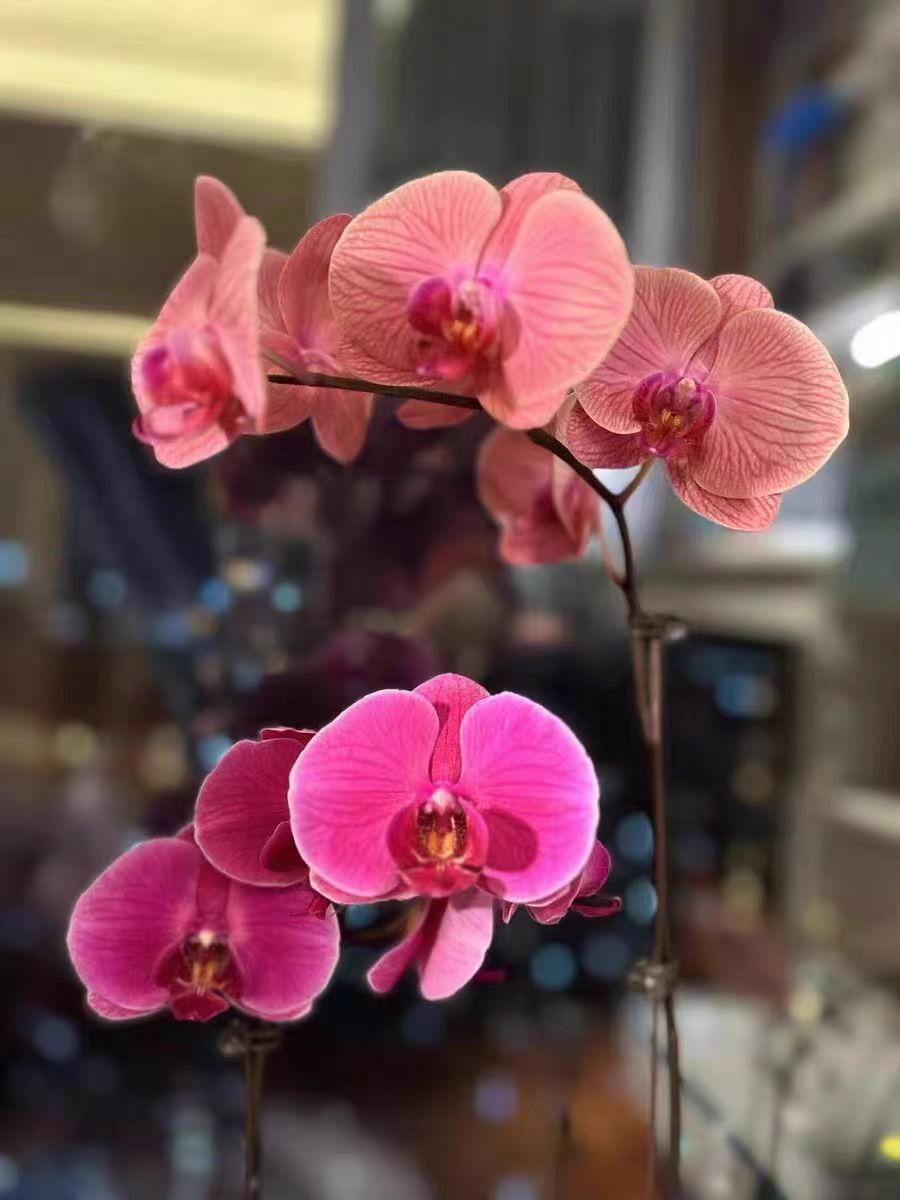When Phalaenopsis (moth orchids) grow to a certain stage and the new seedlings develop their own independent root systems, division propagation can be used to cultivate more plants. However, post-division maintenance is crucial, especially watering, which directly affects whether the new plants can survive and grow successfully.
The root system of Phalaenopsis after division is relatively fragile, and the wounds need time to heal. Improper watering at this stage can easily cause root rot. After division, do not water heavily immediately. Instead, use a spray bottle to evenly mist the plant and the surface of the growing medium, just enough to make the medium slightly moist. This satisfies the plant's initial water needs without causing root hypoxia and rot due to excessive moisture.
Subsequent watering frequency should be flexibly adjusted according to the type of growing medium and environmental conditions. If sphagnum moss is used as the growing medium, its strong water retention capacity means watering intervals should be appropriately extended. Generally, in the first two weeks after division, check the moisture level of the sphagnum moss every 3-4 days. Water when the surface of the moss turns slightly pale and feels slightly dry to the touch. For mediums with better air permeability and weaker water retention, such as bark or coconut coir, increase the watering frequency slightly—check every 2-3 days and replenish water when the surface of the medium is dry.
When watering, avoid directly pouring water onto the roots. It is recommended to use the bottom-watering method or slow pouring. The bottom-watering method involves placing the pot in a container of water and allowing the water to slowly penetrate the medium from the drainage holes at the bottom of the pot. Soak for 10-15 minutes, then remove the pot once the medium is fully moistened. For slow pouring, use a narrow-spouted watering can to gently water along the edge of the pot, allowing the water to evenly penetrate the medium.
In addition to watering, maintenance in terms of light, temperature, and fertilization should not be overlooked. After division, Phalaenopsis should not be exposed to direct strong sunlight but placed in a location with bright diffused light, such as near a window indoors but away from direct sunlight. Sufficient diffused light aids photosynthesis, while excessive light can cause rapid water evaporation from the plant and may scorch the leaves, affecting recovery.
In terms of temperature, Phalaenopsis prefer a warm environment, and the optimal growth temperature after division is 18-28°C. Extremely high or low temperatures will affect plant growth. When the temperature exceeds 30°C, pay attention to enhancing ventilation and appropriately cooling the environment. When the temperature drops below 15°C, take warming measures, such as moving the plant to a warm corner indoors or using a thermal cover.
Regarding fertilization, Phalaenopsis should not be fertilized for 1-2 months after division. At this stage, the root system is fragile, and fertilization is not only difficult for the plant to absorb but may also cause fertilizer damage. After the plant grows new roots and leaves and resumes growth vitality, start applying thin fertilizers frequently. Select a diluted special orchid liquid fertilizer and apply it every 10-15 days to gradually supplement nutrients and promote robust growth.
Furthermore, a good ventilation environment is also crucial for Phalaenopsis after division. Keeping air circulating reduces the risk of pests and diseases and helps regulate humidity, avoiding plant infections caused by excessive moisture. Regularly open windows for ventilation or place a small fan indoors to improve air circulation with gentle breezes.
Watering and maintaining Phalaenopsis after division is a meticulous and complex process. We need to develop a scientific and reasonable maintenance plan based on their growth habits and needs, and closely monitor their growth status to adjust maintenance measures in a timely manner. Only in this way can we ensure that the divided Phalaenopsis grow healthily and vigorously.
How to Water Phalaenopsis After Division?

Share with
Tagged in :




Leave a Reply